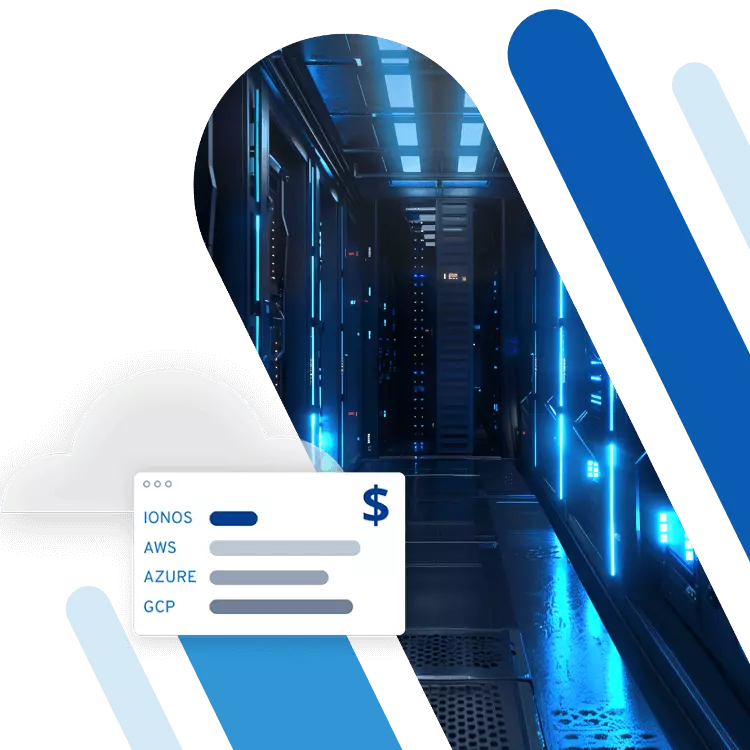What is the application layer in the OSI model?
The application layer is the seventh and, therefore, highest layer of the OSI model. It manages communication across different application programs within a network. The OSI model application layer can carry out general as well as user-orientated services and is used by a wide range of protocols.
What is the OSI model application layer?
The OSI model (short for Open Systems Interconnection Model) has been the standard for open communication between different systems since 1983. It defines common features that are not tied to a specific manufacturer, allowing for different software and hardware to be compatible. This reference model differentiates network communication across seven layers. The seventh, which is also the highest layer, is called the application level. This layer has different contact with different applications and makes services as well as data structures available. The different layers from bottom to top are as follows:
- Physical layer
- Data link layer
- Network layer
- Transport layer
- Session layer
- Presentation layer
- Application layer
What does the application layer do?
The application layer ensures efficient and secure communication between different application programs within a network. In doing so, it not only works as an application on its own, but also carries out other functions as well. Among these are:
- Identification: To do this, the OSI model application layer ensures that the page you are trying to reach, can, on the one hand, be reached and, on the other, clearly identify itself without any issues.
- Authentication: In the context of communication by email, the application layer can identify both the sender and the receiver of an email, or just one of the two.
- Analysis: The application layer can be used to ensure that the relevant requirements have been met so that two systems can communicate with each other. For example, it can be used to check if there is an active network connection.
- Security: The application layer verifies that protocols and procedures regarding privacy, data status and troubleshooting are followed and consistent on both sides of the communication systems.
- Monitoring: The application layer monitors data syntax rules and ensures that the network protocol is maintained during the interaction.
Which services does the application layer carry out?
The application layer operates several services, most of which can be split into two larger categories: CASE (Common Application Service Elements) and SASE (Specific Application Service Elements).
CASE in the application layer
CASE is the foundation for SASE and refers to general functions which regulate the coordination of other protocols. Among standard applications, this includes order transfer, data transfer and email features. An example of a common application service element in the application layer would be directory services. These can be used to create a distribution list or give a server a specific name or address for a specific service or action.
SASE in the application layer
In contrast to CASE, SASE is used to create user-oriented functions that are application specific and often built upon CASE. This may include user-oriented directories, email, virtual terminals, data transfers, or the transfer of graphics and media.
While the two services were initially designed to be used separately, in practice, there is a great deal of overlap between the two. This is due to how SASE and CASE interact with each other as well as the fact that SASE is dependent on CASE. Together, they are commonly known as Association Control Service Elements (ACSE).
Application layer protocols
There are many protocols which use the OSI model application layer. The most well-known of these are theTCP/IP protocols sein, which form the basis of network communication and the internet. Other programs that use the application layer include:
- HTTP (hypertext transfer protocol): This is used to transfer HTML sites.
- HTTPS (hypertext transfer protocol): This is the encrypted version of the transfer protocol.
- Telnet (telecommunication network): This network allows remote computers to access virtual terminals.
- FTP (file transfer protocol): FTP allows data to be transferred between two computers even if they are built differently and have different operating systems.
- TFTP (trivial file transfer protocol): This protocol is similar to FTP but uses UDP.
- SMTP (simple mail transfer protocol): This protocol allows emails to be sent between two computers.
- DNS (domain name system): This protocol transforms domains into IP addresses.
- NFS (network file system):This protocol provides access to remote data via a network.
- POP (post office protocol): This protocol retrieves emails from a server and, if necessary, can delete them.
- NTP (network time protocol): This protocol is the synchronization standard for multiple networks. Additionally, time stamps can be created using this protocol.
- NNTP (network news transfer protocol): This transfer protocol is used to manage messages and newsgroups.
- SSH (secure shell): This allows for a secure connection between two computers in a network.
- SNMP (simple network management protocol): This is used to manage and monitor networks. In addition, it also enables communication to networks from a central location.

